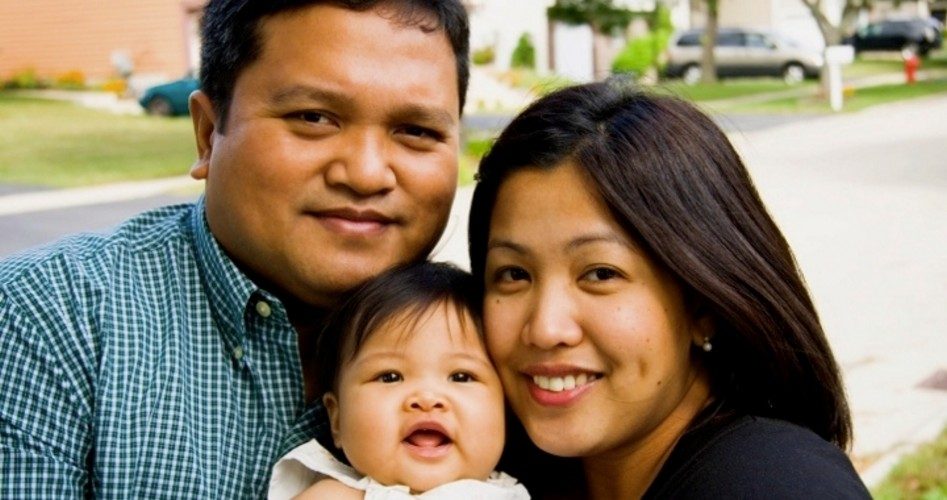
Foreigners are 13 percent of the population in the United States, the U.S. Census Bureau reported last week.
The Los Angeles Times reported that 13 percent, or 40 million persons out of about 300 million, is the largest number of foreign born since 1920. Not surprisingly, the largest cohort of foreigners are Mexicans and Latin Americans.
Correlating a report from the Federation for American Immigration Reform to that of the Census Bureau shows that those states with the highest number of foreigners also spend the most on illegal aliens.
The Data
“The Foreign Born Population in the United States: 2010” does not divulge how many of the foreign born are illegal aliens, but it does show what most people would suspect: Mexicans are the largest group of foreign born.
“The foreign-born population from Latin America was the largest region-of-birth group, accounting for over half (53 percent) of all foreign born (Table 2),” the report said.
By comparison, 28 percent of the foreign born were born in Asia, 12 percent in Europe, 4 percent in Africa, 2 percent in northern North America (i.e., Canada), and less than 1 percent in Oceania [Australia and nearby islands in the South Pacific]. Among the 21.2 million foreign born from Latin America, 11.7 million, or over half (55 percent), were born in Mexico. Of the total foreign-born population, 29 percent were born in Mexico.
As well, the data show that the United States has undergone a veritable invasion of foreigners, again, mostly from Mexico, in the past two decades. “Over half of the foreign born came to live in the United States since 1990, with about one-third entering the country in 2000 or later,” the report said.
California struggles under the greatest weight of foreigners, the report said. Twenty-seven percent of the Golden State’s population is foreign born, while in New York and New Jersey, 22 and 21 percent of the populations are foreign born.
More than half of foreigners in the United States live in California, New York, Texas, and Florida, the report said, with California the home of 25 percent. New York, Texas, and Florida have 30 percent of the nation’s foreigners.
In 14 states and the District of Columbia, the percentage of foreign born was equal to or greater than the national average of 13 percent. With the exception of Texas, Florida, and Illinois, these states were primarily in the western and northeastern parts of the country.
Regionally, the Midwest is least affected by the invasion of foreigners. “With the exception of Illinois (14 percent), the percentage of foreign born in all states of the Midwest region was below 8 percent, including North Dakota and South Dakota, each with about 3 percent,” the report said.
Seventy-four percent of foreigners live in 10 states, while the other 40 states each contain less than 2 percent or less.
Fecundity
Foreign women boast higher fertility rates than native-born Americans. “About 70 of every 1,000 foreign-born women aged 15 to 50 had given birth in the 12 months prior to being surveyed, compared with about 52 of every 1,000 native women aged 15 to 50,” the report said, with Africans having the highest fertility rate and foreign women giving birth to fewer bastards.
Among the regions of birth, foreign-born women aged 15 to 50 from Africa had the highest fertility rate, with 97 of every 1,000 women having given birth in the 12 months prior to being surveyed.
About 85 of every 1,000 foreign-born women aged 15 to 50 from Mexico had given birth during the 12 months prior to being surveyed.
Foreign-born women have a lower rate of single parenthood, however. About 39 percent of native women who had given birth in the past 12 months were unmarried, compared with only 25 percent of foreign-born women.
Foreign males also have a higher employment rate than Americans, lending credence to the fears of immigration opponents, the report suggests: “Foreign-born males (79 percent) were more likely to be in the labor force than native males (68 percent).”
And foreigners are also younger as a group than native Americans, the report said, with 50 percent between 18 and 44. Only 35 percent of native-born Americans are in that age cohort.
How Many are Citizens
The report also offered a picture of how many foreigners are citizens. About 44 percent were naturalized citizens in 2010. As expected, foreigners from Europe and Asia boasted the highest percentage of naturalized citizens: 62 and 58 percent. Latin Americans had the lowest percentage of naturalized citizens at 32 percent.
Of those born in the Caribbean,over half (54 percent) were naturalized citizens. By comparison, 44 percent of the foreign born from South America were naturalized citizens.
About one-fourth of the foreign born from Mexico were naturalized citizens.
Foreign men and women not only give birth to fewer children out of wedlock than native women but also seem to have more respect for the marriage sacrament, the report showed. “A higher proportion of foreign born (55 percent) than native (48 percent) households were maintained by a married couple,” the report said.
Among the regions of birth, householders born in Asia (63 percent) and Oceania (62 percent) were the most likely to be in a married-couple household. Within Latin America, households with a householder born in Mexico were the most likely to be maintained by a married couple.
Compared with other regions, householders born in Latin America were more likely to be female with no husband present. This is especially true for Caribbean households, where 1 out of every 4 were families with a female householder with no husband present.
Language
Foreigners aren’t adept at learning fluent English. “About 85 percent of the foreign-born population spoke a language other than English at home, compared with about 10 percent of the native population,” the report said.
Fifteen percent of the foreign born population spoke only English at home. An additional 33 percent spoke a language other than English at home and spoke English “very well.”
The data also showed that Europeans, Africans and Oceanians are more likely to speak English at home than Latin Americans and Asians. Ten percent of foreigners do not speak English.
What Do Foreigners Cost
The Census study does not report how many of the foreigners are illegals or how much they cost American taxpayers in welfare benefits, health care, public schooling or imprisonment.
But FAIR estimated the cost of illegals to the United States at more than $114 billion in 2010. The federal government picks up about $29 billion, leaving just more than $84 billion to the states.
The two reports correlate: The states with the highest percentage of foreign born also spend the most money on illegal aliens.
California, for instance, is home to 25 percent of all the foreigners in the United States; they are 27 percent of the state’s population. Illegals cost California nearly $22 billion.
Nearly 30 percent of foreigners live in Texas (10.4 percent), New York (10.8 percent) and Florida (9.2 percent). Together those states spend about $24 billion on illegals: $8.9 billion in Texas, $9.5 billion in New York and $5.5 billion in Florida.
New Jersey, where foreigners are 21 percent of the population, spends $3.5 billion on illegals, FAIR reported.
With the lowest number of foreigners in its population at just more than 1 percent, West Virginia spends the least of any state on illegal aliens: $31 million.



